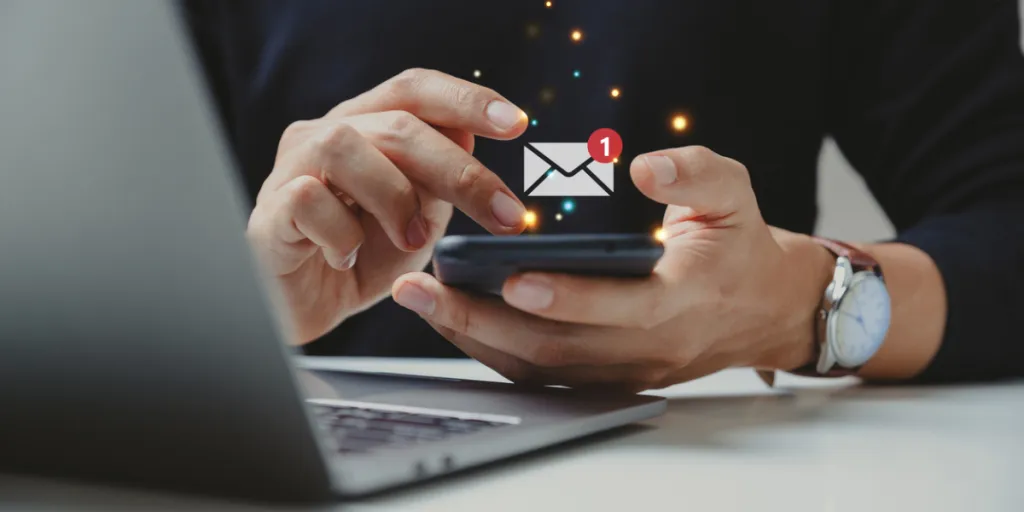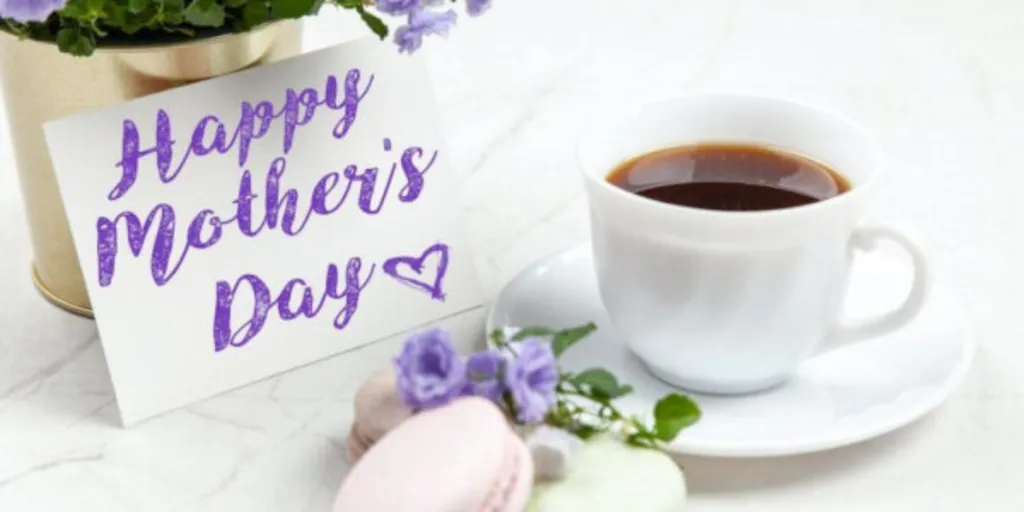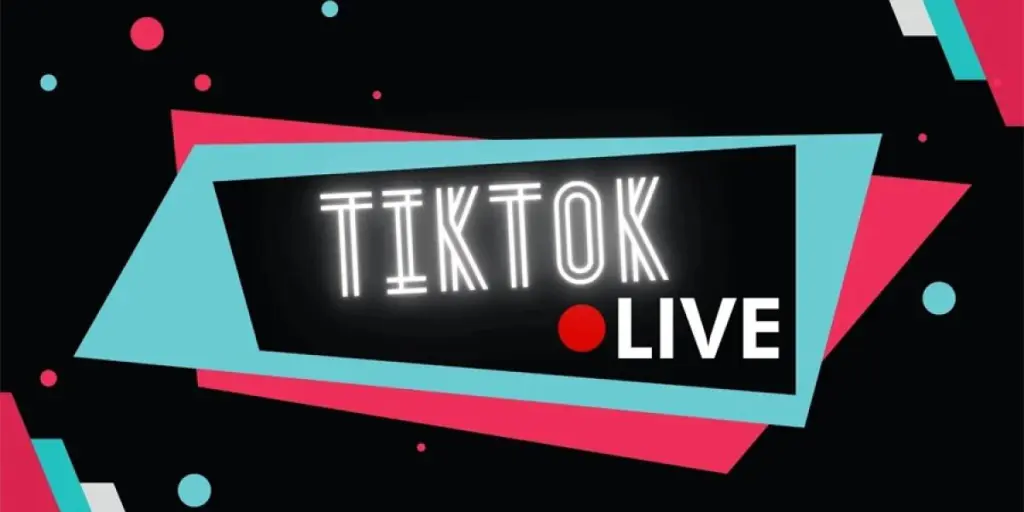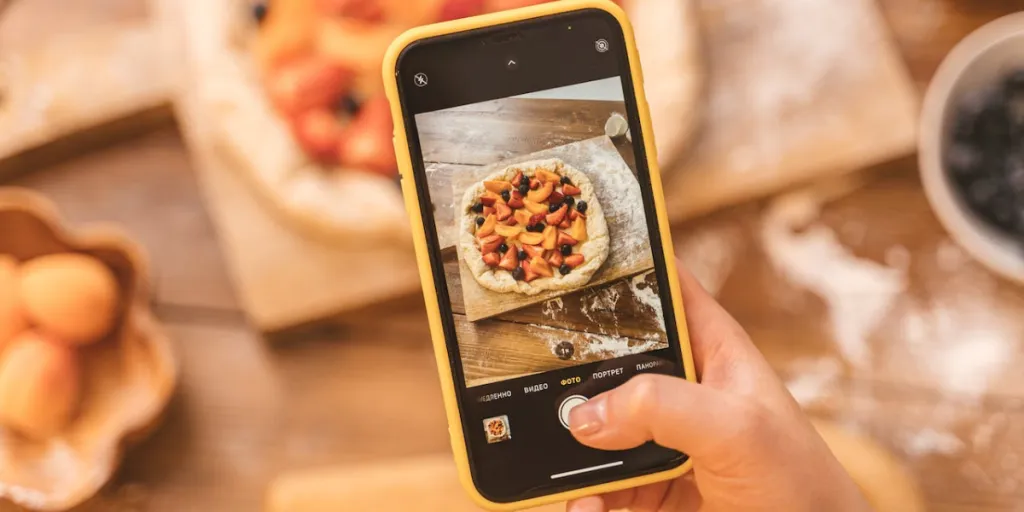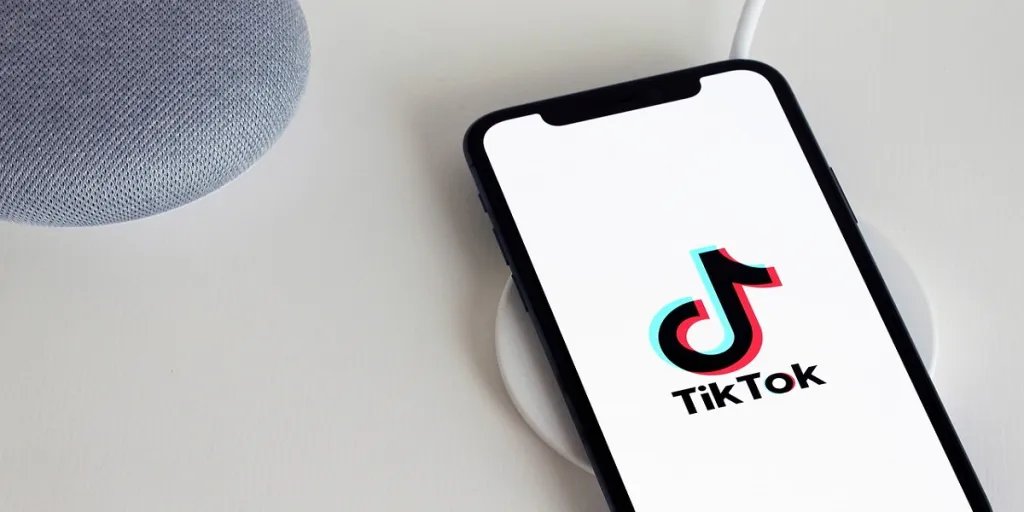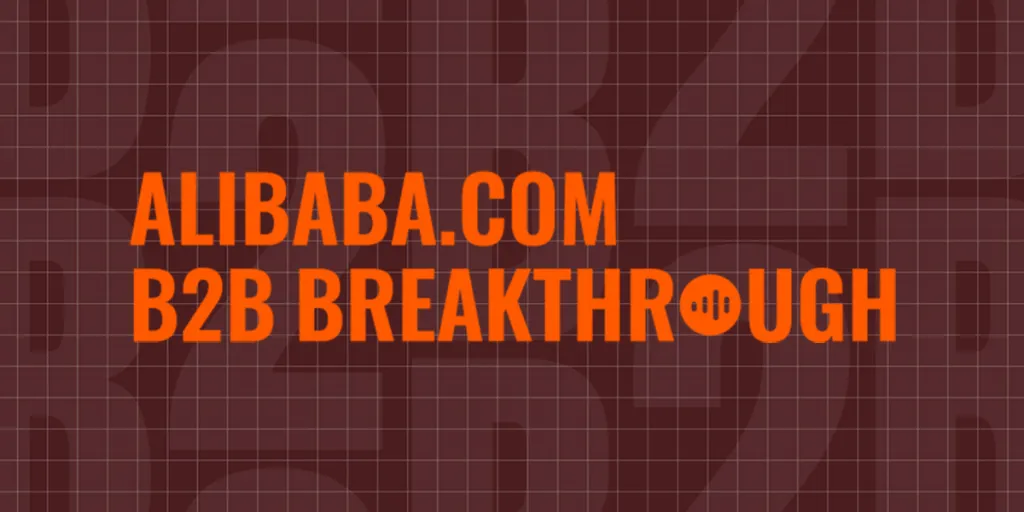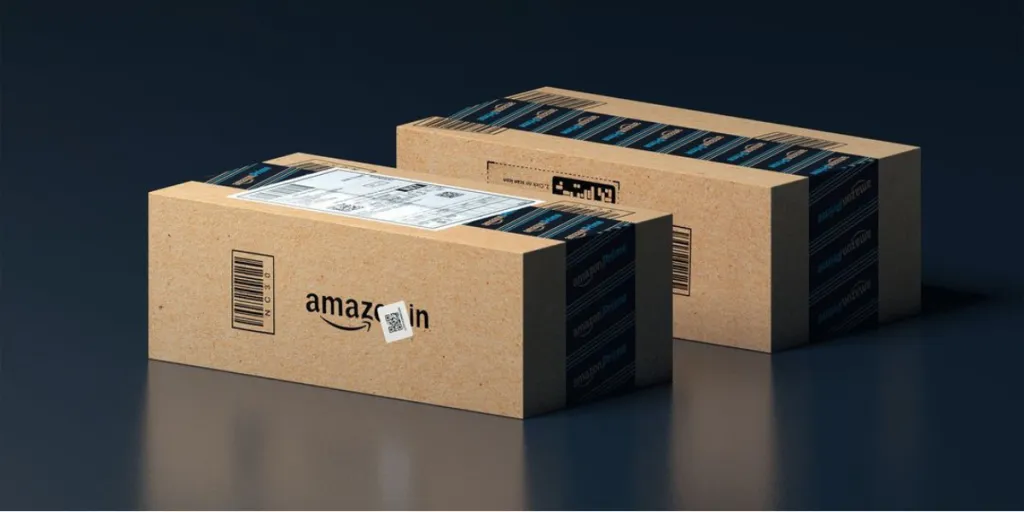One big assumption about mobile messages is that they’re intrusive and unwelcome.
In actual fact, a survey by Simple Texting shows that 70% of consumers chose to receive texts from businesses in 2022.
When used thoughtfully and with the recipient in mind, mobile messages can be both valuable and welcome.
In this post, we showcase the various message types that your business can leverage to not only engage your customers effectively but also turn prospects into customers.
Table of Contents
6 most important types of messages
Short Message Service (SMS)
Multimedia Messaging Service (MMS)
Push Notifications
Instant Messaging (IM)
In-App Messages
Rich Communication Services (RCS)
Wrap up
6 most important types of messages
It’s important to know the different message types that suit your audience. To do so, you can take various factors into consideration, such as demographics, budget, the type of product you’re marketing, and so on.
Also, note that certain message types require customer data and consent (opt-in). This is generally via the provision of their phone number or email.
Even push notifications need customer acceptance. Similarly, in-app messages are only visible when users have the app open. These considerations will help you implement a more effective campaign.
Now, let’s delve into the different message types, best strategies, and use cases.
Short Message Service (SMS)
SMS marketing is a direct marketing approach. It includes sending promotional offers, updates, and news to customers through text messages. It’s a convenient way to communicate, thanks to its speed and positive reception.
Text messages do come with certain limitations. For instance, they have a 160-character limit and don’t support attachments or visual branding.
Nevertheless, SMS remains a powerful two-way communication tool for businesses. Good email and SMS marketing software can help you leverage the power of SMS marketing for your business.
Its versatility makes it applicable across various industries and use cases. It also complements other marketing channels really well, driving customer engagement.
Here are some real-world scenarios where different types of text messages can be used:
- Promotional offers
- Appointment reminders
- Order updates
- Abandoned cart recovery
- Birthday or anniversary offers
Take a look at how Once Upon a Child uses SMS to effectively notify subscribers about limited availability due to staffing shortages:
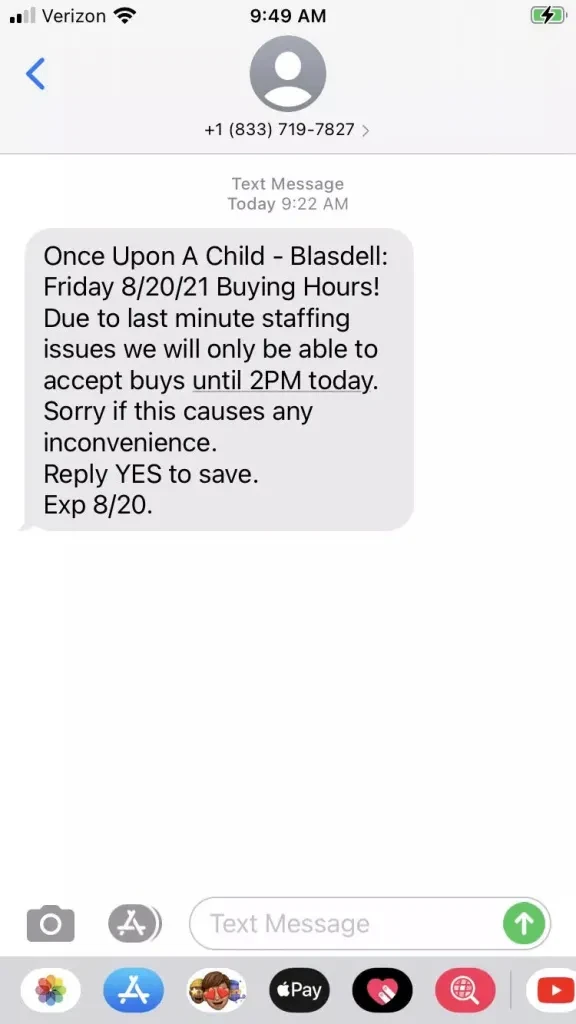
Multimedia Messaging Service (MMS)
Next on our list of message types is MMS. MMS is one of the most popular message types that allows you to send multimedia content.
It supports photos, videos, audio, as well as GIFs. This feature is what differentiates MMS and SMS.
The character limit for text in MMS messages is generally around 1600, while media attachments can go up to 3.75 MB. However, these limits may vary on certain devices and carriers.
In general, MMS requires more data and typically incurs higher costs than SMS. But the increased investment lets businesses deliver engaging messages with higher conversion potential.
These types of messages are a great way to:
- Visually showcase products or services
- Break down complex concepts or information
- Enable creative storytelling
- Share visual coupons or QR codes
Check out how a company uses MMS marketing to showcase a limited edition product. Plus, they conclude with straightforward instructions for opting out if needed.
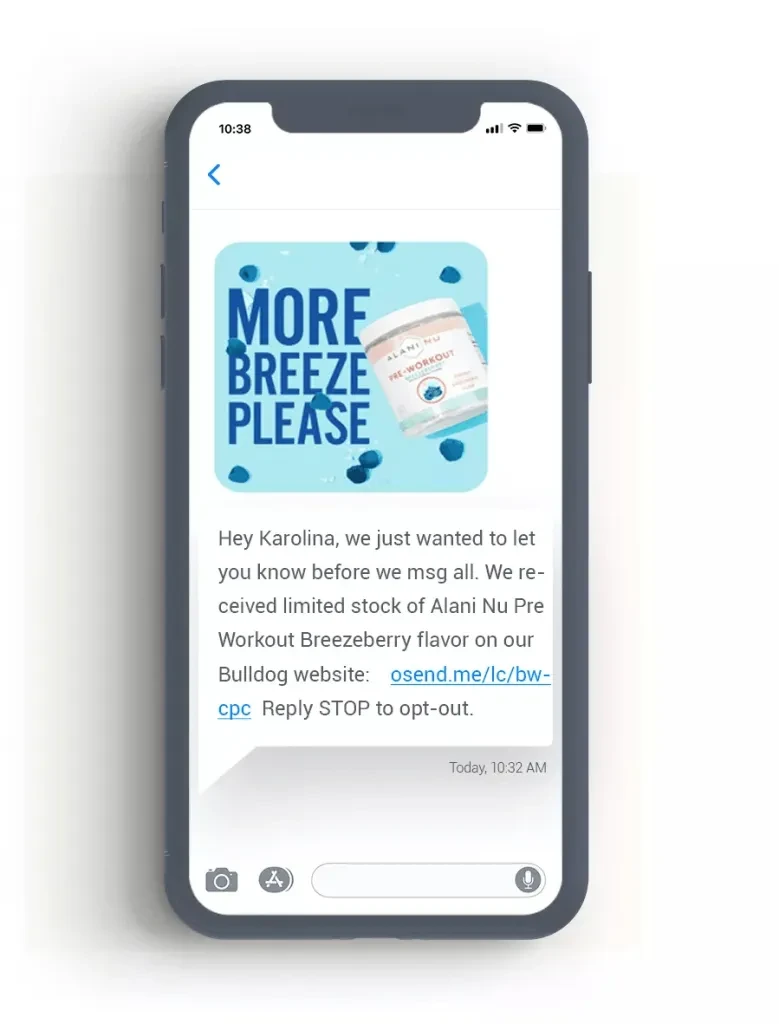
Overall, MMS enables businesses to establish stronger connections with their audiences and communicate with less reliance on text.
Push Notifications
Push notifications are essentially popup messages. There are web push notifications for desktops as well as mobile push notifications.
They’re little alerts that deliver updates, reminders, or offers to your screen. Imagine them as text messages, but with visuals and added interactivity. You can also customize the title and icon for a more personalized touch.
Push notifications work well because they can be viewed without opening any application, plus most devices have settings for users to control their push notification preferences.
Here are some tactics you can use to craft engaging push notifications:
- Personalize notifications based on user behavior, preferences, or location.
- Keep notifications short, clear, and to the point.
- Segment your audience to target specific user groups.
- Use emojis and visuals to make messaging more memorable.
- Be mindful of the frequency of notifications.
A crisp desktop notification like this one is effective enough to keep customers informed about their order status:

Starbucks, on the other hand, used a timely mobile reminder to notify users about a nearby available discount:
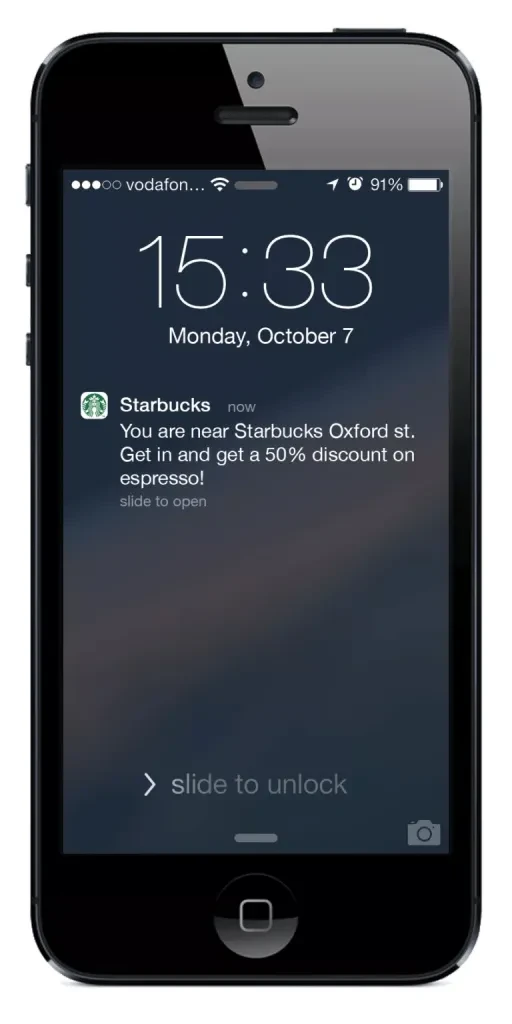
Check out these push notification examples to grab some ideas for your campaign.
Instant Messaging (IM)
Instant messaging serves as a substitute for traditional SMS. It is ideal for swift real-time conversations. This makes it especially great for conversational commerce. It uses popular platforms like:
- Facebook Messenger
- Telegram
This has become one of the most effective ways to engage customers. Moreover, the popularity of smartphones has made instant messaging accessible globally. In fact, this type of messaging is a prime example of ‘be where your customers are.’
Popular instant messaging platforms boast a range of key functionalities. These include real-time messaging, multimedia sharing, and group chats.
However, this message type warrants extra caution about security. You must prioritize data encryption for all transmitted information. Moreover, it’s best to get consent from users before sending them any marketing messages.
In-App Messages
One of the most common message types is in-app messages. These are messages that users receive while actively using a mobile application.
When done right, this type of messaging makes users want to continue using the app. Sometimes, it even encourages desired actions within the app.
In-app messages often appear as popups or adverts, but they serve various purposes beyond promotion. Here are some of them:
- User onboarding: In-app messages can guide new users, helping them navigate the app.
- Offering incentives: This is one of the best message types to boost conversions. It involves promoting special offers, discounts, or limited-time deals.
- Feedback collection: They can be used to ask users for feedback or reviews. With these valuable insights, you can improve the app and thus the user experience.
Creating effective in-app messages is challenging for several reasons. But there are many ways to improve efficiency. For starters, maintain contextual relevance to the user’s current actions or needs.
Also, make sure you’re delivering messages at the right time. Otherwise, you risk interrupting your user’s experience.
Other essential areas that demand attention are mobile optimization, personalization, and clarity.
Rich Communication Services (RCS)
Last on our list of message types is Rich Communication Services (RCS). Although RCS isn’t new, it took several years for it to gain traction.
It aims to enhance the native messaging functionality on Android phones, and the following features make it appealing for businesses:
- High-quality multimedia content such as card carousels
- Read receipts
- Typing indicators
In essence, RCS delivers an app-like experience to users. What’s great is that it doesn’t require a separate app installation. This is a win-win situation for both businesses and users.
However, its adoption does present challenges. Device support is a significant concern, varying among smartphone models. Transitioning users from SMS to RCS can also be time-consuming.
And finally, there’s also competition from popular OTT messaging apps. After all, most of them already offer similar features and a large user base.
Wrap up
In conclusion, all message types play a vital role in modern marketing strategies. Each serves its own purpose and offers unique advantages.
While SMS marketing offers quick communication, MMS enhances engagement with multimedia. Push notifications are great at capturing attention, and in-app messages provide interactive experiences. Finally, RCS delivers app-like features without really requiring one.
This makes it essential to use different types of messaging. This way, you can cater to diverse communication needs effectively.
Source from Omnisend
Disclaimer: The information set forth above is provided by Omnisend independently of Alibaba.com. Alibaba.com makes no representation and warranties as to the quality and reliability of the seller and products.
